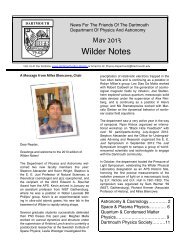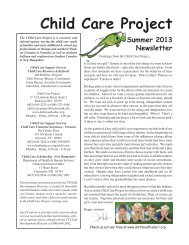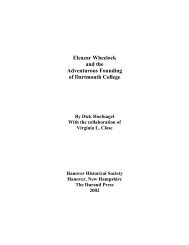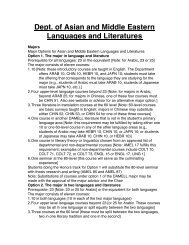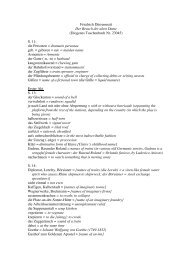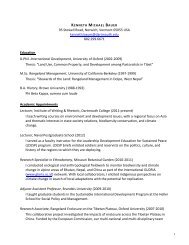A Log Cabin Out of Stone: - Dartmouth College
A Log Cabin Out of Stone: - Dartmouth College
A Log Cabin Out of Stone: - Dartmouth College
You also want an ePaper? Increase the reach of your titles
YUMPU automatically turns print PDFs into web optimized ePapers that Google loves.
eaders. A dynamic equivalence would recreate that relationship. In a dynamic<br />
translation, “attention is directed, not so much toward the source message, as toward the<br />
receptor response.” 8 Thus, in order to successfully translate dynamically the primary<br />
consideration is how the readers receive the test. In this approach analysis is a chief<br />
priority for the translator.<br />
Nida’s approach is helpful for me in thinking about what is important in<br />
translating. The dynamic equivalence refers to the dynamics between the reader and the<br />
original text; that is, the relationship that the original reader has with the original words.<br />
That is very important to me in my translations. However, when I say inner dynamics, I<br />
am referring to the dynamics within the poem itself. So the inner dynamics <strong>of</strong> Horace’s<br />
epode 1 has to do with the ironies involved in the relationship between poet and patron.<br />
The way Horace describes Maecenas and his friendship with Maecenas are very crucial<br />
in bringing out the inner dynamics.<br />
My approach was also influenced by Robinson’s discussion <strong>of</strong> what he calls<br />
metonymic translation. With metonymic translation, the translator does not abandon the<br />
poem, but identifies an aspect <strong>of</strong> the poem and finds an available equivalent in the target<br />
language. This is a combination <strong>of</strong> analysis and translation that illuminates aspects <strong>of</strong> the<br />
original. A metonymic translation does not attempt to reproduce the entire textual sense<br />
but instead attempts to recreate the poem using different materials. The result, although<br />
markedly different has the same function.<br />
Robinson also touches on the emotional aspect <strong>of</strong> word choice.<br />
We do feel words, and most typically guide our choice <strong>of</strong> words when<br />
we speak (and our interpretation <strong>of</strong> words when others speak)<br />
emotionally, by recourse not to an abstract cognitive system <strong>of</strong> rules but<br />
8 Nida, "Principles <strong>of</strong> Correspondence," 14.<br />
9



